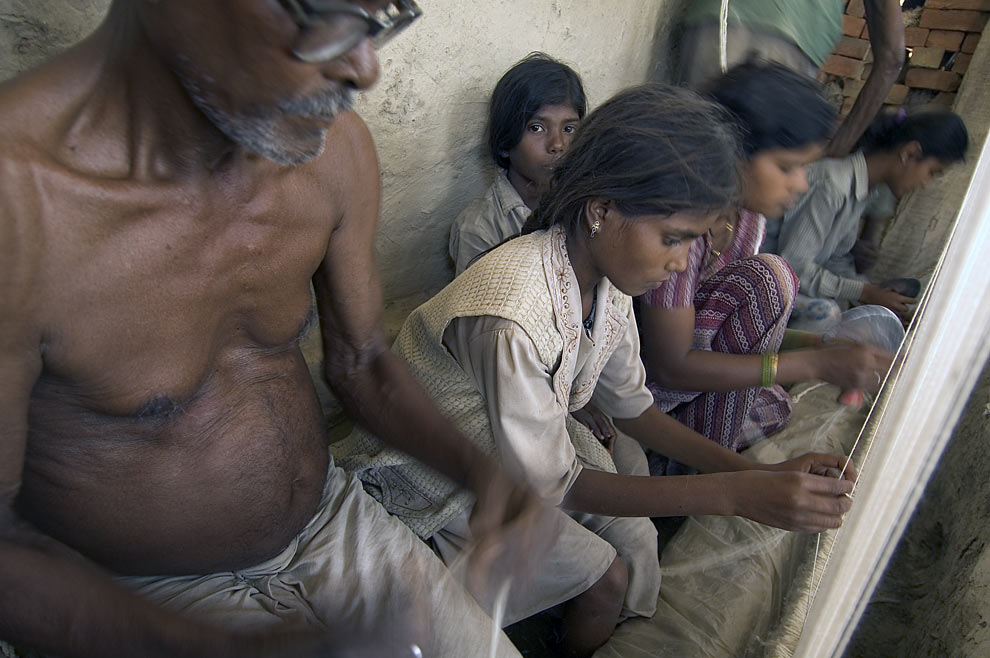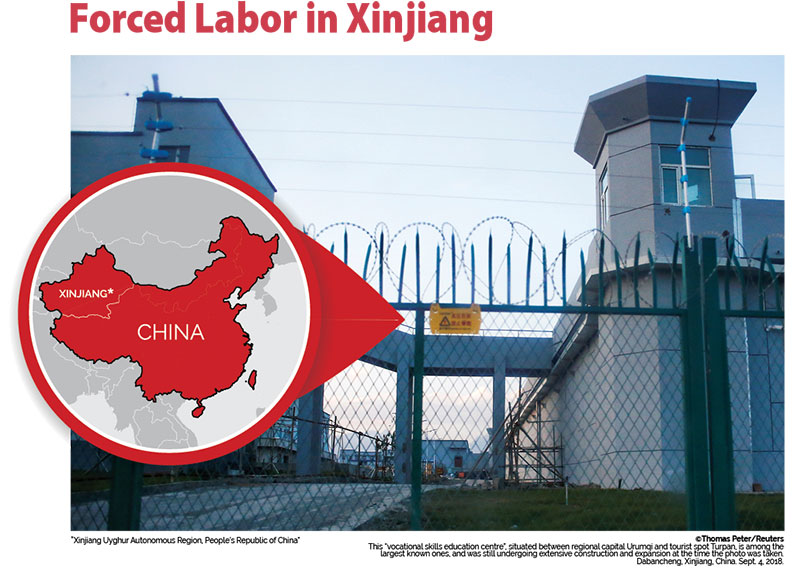
by Sriya Shubhalaxmi Mishra 27 July 2021
International labour Organization’s (ILO) Forced labour Convention, 1930 defines Forced or Compulsory labour as ‘all work or service which is exacted from any person under the menace of any penalty and for which the said person has not offered himself voluntarily.’ Here the nature of work that the employer extracts from the worker is of no relevance, rather it is the nature of the relationship existing between the parties.
The concept has undergone some humongous changes post inclusion of trafficking involving sexual exploitation and exploitation of migrant workers coupled with the lack of accountability in a private economy. Forced labour also bears relation to Slavery. UN’s Slavery Convention, 1926 defines ‘Slavery’ in its Article 1 and recognises forced labour as a constant in every expression under slavery-like practices by including ‘prevention of forced labour from developing into conditions analogous to slavery’ as its aim. This article aims to analyse this issue of capitalization on involuntary ‘Forced labour.’ taking the reference of two powerful nations.
(In)Adequacy of the States’ Domestic Understanding: Two Reference Nations
India
Debt bondage is a form of forced labour rampant in India’s labour population and is omnipresent in every sphere of the country. In 1976, with the Bonded labour System (Abolition) Act, India became the first country in the South Asian region to have enacted legislation against bonded labour. Complete with an overriding effect, it declares the system as abolished, promising freedom from bondage.
Indian judgements have always abhorred bonded labour. The Indian Supreme Court (SC), recognising bonded labour as a form of forced labour, violative of Article 21, 23 and directive principles 39 and 42, stated that such labourers must not be compelled to stand against the rigid formalism of the legal process to get the justice they deserve. Emphasising the importance of rehabilitation of the freed workers, the SC has classified service rendered upon remuneration below the prescribed minimum wage as ‘forced labour’.
However, the intention on paper is a bit far from reality. In 2020, the picture of a frail man kneeling in front of his rescuers stirred international sentiments. But the surprising bit is the man who had been rescued is not yet freed. In the same year, 11 children from the Indian capital and a group of 11 adults from Karnataka, were rescued by authorities. The Karnataka case has been deemed landmark as it is the ‘first time’ an accused had been convicted for trafficking under Section 370 of the Indian Penal Code. The inadequacy of India’s domestic legislation becomes apparent when instances of labourers refusing to leave their bondage due to poverty get reported.
The ongoing global pandemic has once again uncovered the ugly existence of this problem. With the mass exodus of workers during the onset of the pandemic, these invisible Indians will now face the wrath of this practice. As India struggles with the virus, lockdowns and layoffs have rendered the unorganised sector unemployed thus opening doors to exploitation and trafficking. Loss of a continued income source would now result in a vicious cycle: more debts, inflated interest rates, inability to pay back these debts, and ultimately bondage.
A glimpse into the future paints an even darker picture. With all lockdowns being lifted, establishments would seek cheap labour to recover losses. At this point, the desperate unemployed labourers, unable to negotiate, would be forced to work at nominal or no wages.
This is most probably rooted in the fact that there exists a social bias towards bonded labour stemming from centuries-long caste discrimination and a general lack of awareness amongst labourers which has enabled exploiters to continue without fear of the law.
China

A recent report by independent UN experts stated that Uyghur Muslims in Xinjiang Uyghur Autonomous Region, China were being subjected to abusive living conditions and were compelled to work in an exploitative working system forming a part of the supply chain of almost 82 Chinese and global brands.
Under UN’s Guiding Principles on Business and Human Rights (GPBHR), protection of individuals against miscarriage of Human rights by third parties, which includes business enterprises, is the standard conduct expected from a state and China, as a member of UN, is expected to meet its International Human rights obligations. Forced labour extracted from the Uyghurs is in clear violation of Article 4 of the Chinese Constitution.
This alleged mistreatment of Uyghurs is just another form of forced labour inflicted by the very state which was trusted to curb it: ‘State Imposed Forced Labour’ (SIFL). SIFL often possesses a political undertone making international detection difficult, especially if instead of its domiciled businesses the nation itself is involved. In a web of global supply chains, this practice is bound to go undetected. Xinjiang cotton, deemed as one of the best fabrics in the world, accounts for a staggering 20% of world supply.
Although certification schemes for cotton mills like Yarn Ethically & Sustainably Sourced may help but even for an individual practicing Conscious consumerism, detection of forced labour is extremely difficult and this requires a proactive deterrence on the part of other nations.
The US has already taken the first step with the Uyghur Forced Labor Prevention Act, prohibiting imports from Xinjiang and sanctioning those responsible for Human rights violations. Another solution may be changes in legislation requiring retailers to list all tiers of their suppliers that can help in detection. Along with disclosure, a robust mechanism of sanction on those defying may also serve as deterrence. Businesses can avoid using output received from forced labour by designing a business model which includes legal professionals.
The Abolition of Forced labour Convention (AFLC), prohibits ‘member’ states from using forced labour for several reasons enumerated, one of which is ‘as a means of racial, religious or other discrimination.’ China has not ratified AFLC and thus the question, How can the UN’s Human rights agenda help put an end to contemporary Forced labour situations?
UN’s Role
The UN Charter prevents UN intervention in a nation’s domestic jurisdiction and in China’s case it is merely utilising its own human resources to develop its own economy, something which is unprohibited. However, the Xinjiang situation is clearly a crime against humanity under article 7 of the Rome Statute of the International Criminal Court (RSICC) and China must cooperate to end this crime by virtue of article 86 of RSICC.
Furthermore, under the International Covenant on Economic, Social and Cultural Rights, of which China is a signatory, Uyghurs are entitled to the freedom to pursue their economic, social and cultural development. Articles 4, 5, 7, 23 of the Universal Declaration of Human Rights’ have also been violated. In this situation, a sanction on the nation may be levied.
India, however, already has an expansive legislative system striving to wipe forced labour out of the nation. So a sanction is not an answer here. The issue with India’s addressal of forced labour is lack of general awareness amongst people along with a dearth of fast track courts and ill-equipped adjudicatory mechanisms to deal with the cases efficiently. This results in the rehabilitation scheme being a failure due to a low conviction rate as under Central Sector Scheme for Rehabilitation of Bonded labourer 2016, financial assistance is furthered only after a conviction, which is contingent.
ILO can play a major role in India by lending assistance in the form of workshops and seminars to train on-ground officials for efficient handling of cases and providing technical assistance for development of data procuring and storing systems to keep a record and status of rehabilitation.
India needs consolidation of income sources rather than one-time monetary assistance, as the rehabilitated labourers lack assets and means of livelihood. A Coordinated effort between NGOs and governments to integrate them into co-operative societies, farms, transportation systems, cottage industries and even MSMEs together with sensitization drives for both the illiterate victims and the biased society by UNICEF would empower the poor and eradicate forced labour.
Apart from a country-specific approach, a global stance must be taken by the UN as Forced labour is not prevalent only in India or China, in fact is a reality in the majority of the countries. Prompt implementation of ILO’s ‘Fair Recruitment Initiative’ in every tier of labour agencies and governments along with special attention towards conflict-ridden areas, which are more likely to be grappling with forced labour, can bring a steady change.
Proposed Legislative Harmonization
A legislative harmonization is required because expressions like forced labour, debt bondage, state-imposed forced labour possess malleable meanings even though their meanings in a legal context are different. Due to this there are often a lot of discrepancies amongst countries’ domestic legislations and slavery is not a crime in many countries.
The words and elements that make up the definition of forced labour hold quite a lot of significance. For example, confirming the nature of the consent given in the employment becomes tough as what might seem as voluntary may change into a forced labour situation impossible to withdraw from. Harmonization of definition would help create one shared idea of the concept leading to better global statistics and reports, and thus greater accountability.
